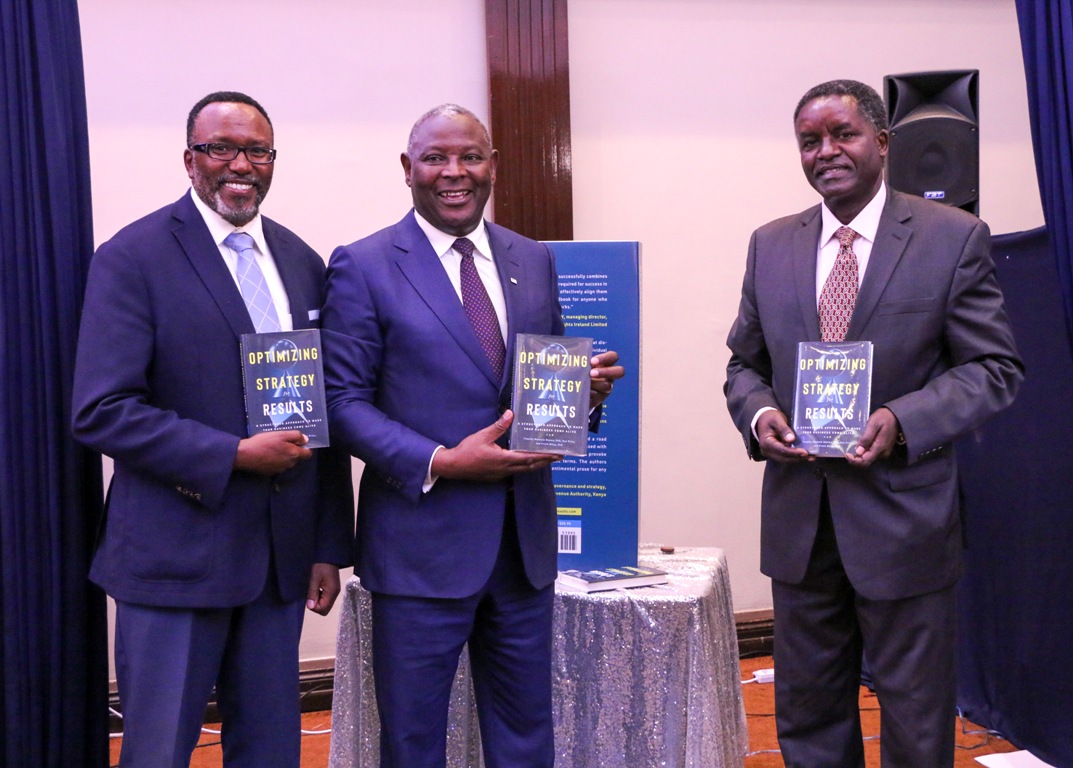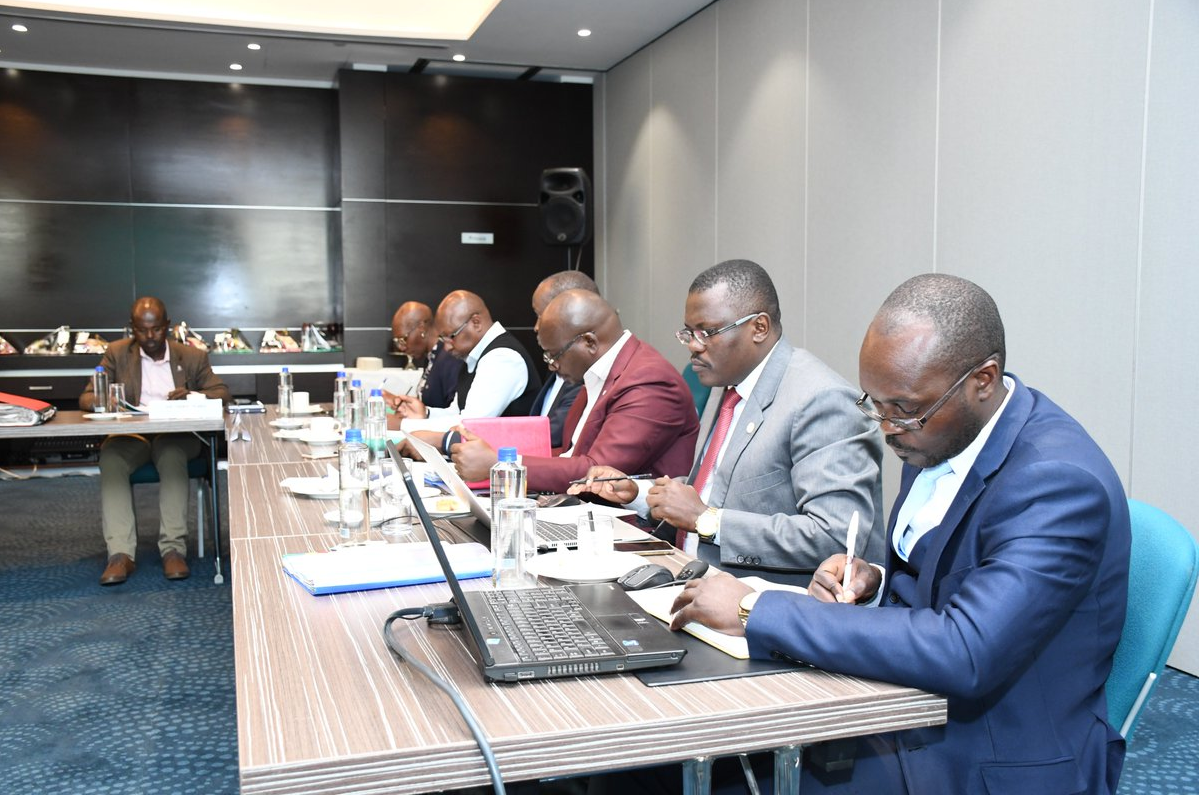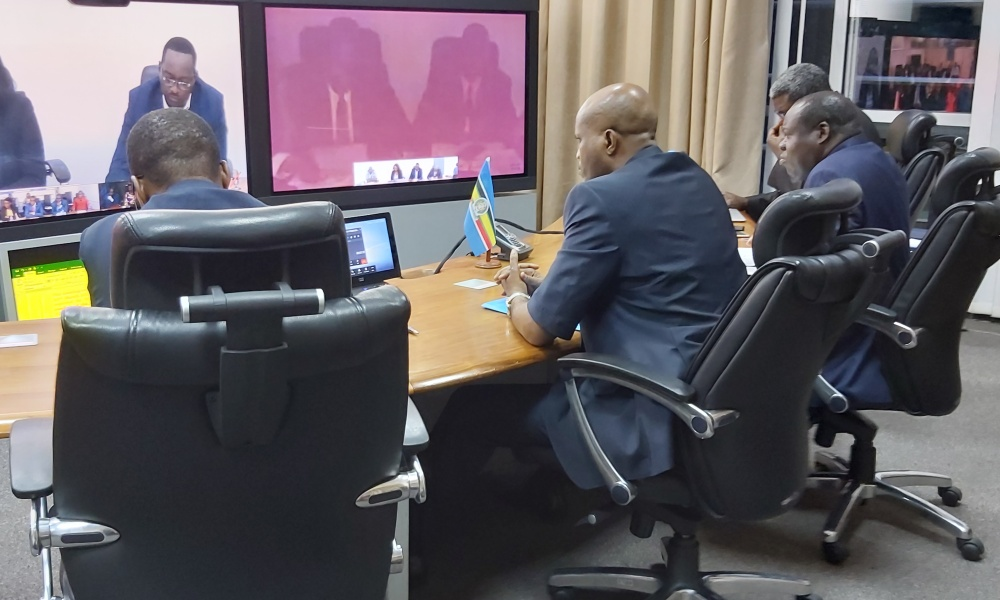Business Process Re-engineering (BPR) traces its origin to the period in the 1980’s when private sector business organizations recognized the need for quality improvements. Companies were systemically letting their customers down through slow response time; inflexibility; and high costs while competition was starting to set in.
The mechanistic or bureaucratic organizations assigned people to specific tasks and performed them in logical sequence of a task oriented work environment. The time had come in the 1980’s to stop thinking about tasks and functions, breaking down work into little pictures, and to get a good look at the “Big Picture”, the business processes the tasks were about.
Through the years of the scientific management era, the focus was the task, and employees were organized according to function. However this system proved unable to meet customer expectations for better speed, accuracy, flexibility and cost. The fathers of business process re-engineering define BPR, as “the fundamental rethinking and radical design of business processes to achieve dramatic improvements in critical, contemporary measures of performance, such as cost, quality service and speed.” (Hammer and Champy, p.32). “Starting over” and “recreating” the organization is the focus of re-engineering. It is the process of fundamentally and radically changing the way work is performed to achieve performance improvements.
Re-engineering is not incremental change. Research has shown that incremental change has less chance of succeeding than wholesale transformation. You will know when you are really engineering when your efforts are so ambitious they scare even you. The purest form of re-engineering involves redesigning systems and processes without undue consideration of the current organizational structures, policies, methods and roles. Re-engineering can be described as new way of re-thinking the way business works and literally throwing away the tried and true methods in order to find greater efficiencies.
When ‘Reinventing Government’ focus on public management is the template for public-service reform. Principles of entrepreneurial government are intended to transform bureaucracies to become innovative, flexible, and responsive organizations. Governments should be competitive, enterprising and market-oriented and above all customer driven. Clients should be redefined as customers. Competition between providers is intended to stimulate innovation and efficiency within government while empowering citizen-consumers.
BPR seeks to manage change as if organizations were machines. Consequently BPR incorporates rhetoric like ‘obliterate and start over, ‘take a blank sheet of paper”, and “wipe the slate clean”, to argue that an organization’s parts can be pulled apart and then built up again from the bottom. Since machines cannot think strategically or create a vision, humans can only program these things into them. Consequently, BPR can only be successful if there is a clear vision and appropriate strategies are in place prior to BPR process implementation. BPR can only be successful if there is a clear strategic vision at the beginning of the project.
In simple terms, re-engineering means management starts with a clean sheet of paper, rethinking and redesigning those processes by which the organization creates value and does work, ridding itself of operations that have become antiquated.
We can sum up the transition of the bureaucratic organization to the re-engineered as the shifting from a focus on strategy, structure and purpose to a focus on purpose, process, culture and people. This phenomenon can be described as taking the “man” out of management with the culturally masculine connotations of command and control and replacing them with traits and skills that in our culture have been considered the feminine traits: listening, interacting, teaching, creating a culture in which others thrive
Business process re-engineering requires a new way of thinking. Traditionally we think in left to right terms. We read from left to right, our sense of time moves from left to right. To re-engineer what already is, however, we need to start on the right side, with a “crazy idea” of a better operating model and of building a workable pathway to the existing model.
Process improvement is the lowest degree of BPR application. It involves improvement of that part of a process, which falls within a particular function, rather than improvement of the entire end-to-end process. The focus is on streamlining the tasks that are performed, which involves looking for opportunities to reduce bureaucracy, duplication and process cycle times, and simplifying forms. Being confined to a single organizational function or department/business unit, re-engineering efforts will have minimum resistance and therefore minimum risk of failure.
Process redesign involves the total redesign of an end-to-end process, and can provide radical process improvement in terms of cost, quality and time. This requires an analysis of the process model at the higher levels of the organizational hierarchy as well as to identify where Information Technology (IT) could be used to entirely eliminate some of the activities in the process. Process redesign requires senior management support. It also involves a considerable amount of resources and could be somewhat risky due to the need for streamlining more than one department/business unit or even organization.

Organizational transformation is the highest degree of application of BPR as its goal is to change the structure and culture of the organization itself in order to improve its processes. It starts with a fundamental self-evaluation of the organization by asking why the organization exists and what it is trying to achieve.
Next, the organization goes on to look at how it actually performs its processes to achieve its goals, and how these processes should be improved. Although this is a risky and expensive exercise, the outcomes could include: radical improvement in overall organizational performance; organization-wide clarity of purpose, direction, capabilities, and mission; and a high degree of customer satisfaction.
Implementation of BPR
In any organization where there are changing needs, multiple stakeholders and increased service expectations, there are various reasons why an organization would embark on a BPR process. Now more than ever before, public and private organizations are faced with the issue of doing more with less. Organizations have to respond to constrained resources such as fiscal or budgetary pressures.
The sincere desire on the part of organizations to improve efficiencies and effectiveness is a strong motivator for embarking on the BPR process. Change is a common motivator for BPR whether it is internal or external to the organization. Likewise a number of behaviours have been identified as common to successful, innovative organizations that include making customer service and satisfaction a focus.
See Also >> Life-Saving Lessons From Billionaire Chris Kirubi
Understanding the effectiveness of an organization’s key processes are fundamental to responding to customer needs. It is precisely because consumer demands (quality, productivity, variety, customization, convenience and timeliness) are not consistent with the strengths of mass production and bureaucratic operations that a revolution is taking place in government Ministries, Departments and Agencies
The fundamental motivators for re-engineering in Organizations is about examining work processes and finding innovative ways to eliminate waste, duplication, and non-valued added activities. BPR is intended to result in significant quality improvement, as well as time and cost reduction. Based upon the analysis, with the exception of responding to political pressures, the BPR motivators in the public and private sector are quite similar.
Critical Success Factors
A clear project purpose must be linked to corporate strategic directions, vision and values. Secondly, process improvement requires a clear scope clause and/or project charter that will enhance project outcomes and ease project completion. In other words, it is necessary to establish performance measures, timelines, quality standards and outcomes.
Process improvement is one element of the continual change process inherent in life personal, societal and organizational.
This process also requires integration across the organization similar to that of a BPR project. There are three essential components to optimal goal achievement in process improvement energy, direction and action. Process improvement is one element of the continual change process inherent in life personal, societal and organizational. Solid planning and organization, ample involvement of those affected by change; and an openness to build collaborative solutions works towards optimal success.
BPR Process Key Steps
There are different models/processes on how to carry out a re-engineering process. The methodology utilized in BPR can vary depending on the organization, or even the process to be re-engineered. Every organization has a unique culture that these processes must operate within, which is defined by such factors as the organization’s willingness, or lack thereof to take risks, embrace change, and reward and empower its employees. All these variables have bearing on the approach that will be used to re-engineer the process.
The process of re-engineering can be summarized in seven steps as follows): 1. Defining a vision for the organization; 2. Articulating and recording important assumptions; 3. Plan development 4. Business analysis; 5. Business redesign; 6.Implementation phase; 7. Measuring performance.
- Defining a vision for the organization:
This vision must be clear and precise and reflect what the future that needs to be created is. It must be communicated to all employees so that staff can see the big picture, including what will be different in the future and what will remain the same.
- Articulating and recording important assumptions:
This step involves answers to questions such as why change is needed. What are the consequences of remaining with the status quo? Who demanded the changes? And what are the required changes? At this step organizations need to review customer requirements before selecting the core processes for BPR. It is essential to understand the customer needs and not to assume anything.
Assumptions can hide failures. Using questionnaires, focus groups, interviews, etc can identify these customer needs. This information will ensure the selection of the correct path for change. The one distinct difference between the private sector and the public sector is that in the public sector, there is competition for customers and a choice for customers to go elsewhere.
- Plan development:
This step includes the establishment of objectives, who will re-engineer, identifying the core business, development of strategies; identifying the processes that need re-engineering, and managing communication and expectations.
Top management drives re-engineering. But getting there can be a very autocratic, nondemocratic process. It has to be this way because the level of change that the BPR process demands is highly threatening to people, and they aren’t likely to accept it voluntarily. When top management commits to re-engineering, employees have no choice. You either get on the train, or we’ll run you over with the train.
BPR asks managers to consider how work would be done and their organization structured if they were to start over from scratch. The concept of reengineering takes a “greenfield” approach to re-thinking current systems of delivery, resulting in the redesign of delivery systems from the ground up.
Read >> CEOs Acting For Too Long Isn’t a Cool Thing
Understanding the existing processes is extremely important at this stage. It is necessary at this stage to develop a process overview, which clearly defines the processes. The mission, scope, boundaries, timeframes are identified and clearly communicated.
This step involves the appointment of a BPR champion and the establishment of a BPR Team. The competency profile for the BPR Team includes: leaders, flexible, adaptable, problem solver, analytical, strategic thinker, motivated community and organizational awareness, interpersonal/influencing skills and; corporate commitment. It is essential at this stage to provide training to the BPR team
- Business Analysis
This step focuses on information gathering of capabilities and competencies, and evaluating organizational issues, customer needs and information technology capabilities. The selection of processes for review occurs at this stage. It involves the consolidation of processes and the identification of dysfunctional processes that receive a lot of complaints or that consistently perform poorly. Processes that taken excessive amount of time to complete or use excessive resources identified for BPR. In certain circumstances there could be processes that require management’s attention.
- Business Re-design
Re-design involves designing new processes towards completeness and conformance which may lead to: several jobs being combined into one; workers making decisions; working being performed where it most makes sense; controls and checks being reduced; reconciliation tending to be minimized; and a case manager generally providing a single point of contact. At this stage the action plan is identified and process owners are appointed. Processes are simplified to reduce process time and remove any bureaucracy that may affect implementation. No value added activities are removed at this stage. Processes are standardized and automated where possible at this stage. Equipment and IT is also upgraded at this stage.
t is important to introduce and establish a feedback system as well as regular audits.
Communicating the vision of the improved processes is extremely important at this stage because it provides assurance that the BPR initiative is both necessary and properly managed. This is often overlooked but ranked as the most important by Organizations. Management must communicate with all employees so that they understand the vision of the future and continually provide information on the progress of the BPR initiative good and bad.
At this stage it is extremely important to tackle any actions that need resolution. It is important to introduce and establish a feedback system as well as regular audits. The downside to this step is that typically the BPR champion wants everyone to get involved and to take ownership of the process and yetis often very time-consuming.
- The implementation phase
This step addresses the following issues: the parts of the structures that will not be changed but will be affected by the change; identifying the changes that will be made in future rounds; testing the new design to evaluate the initial performance; making initial refinement and initiating a continuous review process.
- Measuring the performance
Monitoring and assessing results is an important stage of the re-engineering process, because it evaluates results, identifies further opportunities to be addressed and improves processes. In order to execute the plan, it is important to change impact on the organization and the customer in order to identify and eliminate problems. This step requires benchmarking of the processes.
In regard to information technology (IT), one of the common techniques used in re-engineering for process improvement is to redesign work-flows, decision making and information systems in a parallel, integrated fashion rather than sequentially or independently. Since IT is an enabler for such process redesigns, it is obviously an important element to Organization re-engineering.
The obvious question is whether an adaptation to these steps would still be considered to be a BPR. Organizations are considered not to be reengineering in the purest form unless all seven steps of the re-engineering process are fully executed. However as long as the fundamental BPR principles and outcomes are achieved, the process steps can be adapted to the needs of each organization depending on its size, structure, and resource allocations.
These fundamental BPR principles or outcomes include: (1) identifying an organization’s distinctive competencies; (2) assessing core processes; (3) and reorganizing horizontally by process. As mentioned previously, BPR can take the form of process improvement, process redesign, or organizational transformation.
People facing change need to know what is going on, in detail. The problem is that big changes are hard to describe in advance of a BPR process, so managers often cannot provide the detailed description. Sometimes the process is painful. A formal process of business process re-engineering within an organization that calls for the appointment of a re-engineering team lead by a senior executive, with a strong mandate to cause an organization to turn itself inside out and upside down to persuade people to accept the radical disruptions that reengineering brings is recommended
The formal structure includes several key players. The relationship among these players is as follows: “The leader appoints the process owner, who convenes a re-engineering team to reengineer the process, with the assistance of the czar, and under the auspices of the steering committee.” (Champy, p. 103). Several Organizations have met this central test where the BPR is being led by the City Manager, who has appointed a process owner, known as the Team Coordinator.
The Team Coordinator convenes with a re-engineering team to re-engineer the process with the assistance of the City Manager, and under the auspices of a steering committee. The steering committee is usually composed of senior management. Several Organizations have followed this formal approach. The implementation and execution of BPR depends on those who do the work. The participation, and more importantly, acceptance and ownership, at the grass roots level are essential for a successful BPR. To obtain “buy-in”, constant communications is key. It is best to have BPR teams looking at different common aspects across the organization using staff from all levels and across departments or business units.
Read >> The Architectural Make-up organisations
Peters and Waterman’s bestselling book ‘In Search of Excellence, published in1982, significantly influenced management practices. Several lessons in the book, which are based on study of high-performance business organizations. For example one principle it to give employees a great deal of operating autonomy as long as they do not violate certain strongly held central tenants of the organization (Peters and Waterman, (1982, p.245).
This theory is upheld with the identification of business processes. Peter Drucker’s 1974 book focuses on the ongoing debate over whether public organizations can improve their performance by adopting private sector practices so as to operate in a more “business-like” fashion. He contends that all service institutions need “a system and structure that directs them toward performance wherever possible.
In particular, they need to define what their business is, set clear objectives and goals, establish their priorities, define measurements of performance, and use these measurements for feedback on their efforts, and audit objectives and results to provide a basis for abandoning obsolete and unproductive activities. “(Drucker, p. 158-159).
Therefore one can conclude that there is an increasing need for BPR in order to respond to increasing demands from the customer for increased accountability and performance management.













Leave a comment